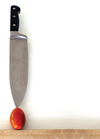Comparing seven current video editing programs
|
Cinelerra
Adam Williams tinkered with Cinelerra starting in 2001 [2]. Updates appeared only rarely, because of his stated emphasis on stability. Contrary to his assertion, Cinelerra didn't shine and continually crashed during our tests.
The program's user interface is crammed with features (Figure 2). An introduction is included, but it exposes many flaws and admits to being outdated. Because Cinelerra doesn't belong to a distribution, you have to compile it. In our case, it worked only with Ubuntu 12.04.
 Figure 2: Cinelerra's composition and functionality is mainly targeted at advanced video artists and professionals.
Figure 2: Cinelerra's composition and functionality is mainly targeted at advanced video artists and professionals.
After startup, many windows appear (similar to GIMP) that unfortunately cannot be merged into a single main window. On the other hand, you can distribute the windows across multiple monitors. Cinelerra assembles clips in the Resources window, which also includes all the effects.
A video from an AVCHD camera didn't test well with Cinelerra 4 and MPEG-4 material showed defined block artifacts. Cinelerra also provides a recording function, accepting DV cameras, Video4Linux2 devices, webcams, DVB receivers, or your desktop; you can simply create screencasts and edit them directly.
You can arrange clips on any number of tracks in the timeline window. Cinelerra has separate tracks for video and audio material. That said, you need to be scrupulous about which track you've selected and remains active. In practice, you could accidentally edit the video but not the associated audio.
Clip previews appear in the separate Viewer window. Here you can trim clips with a few mouse-clicks; a single frame preview helps in exact positioning. Alternatively, you can grab a clip by one end in the timeline and shorten it, which unfortunately doesn't provide a preview. You can save these shortened clips as separate videos on demand. Both in clips and on the timeline, you can set bookmarks that you can navigate to quickly. This way you can easily get to key scenes in complex projects.
Operating in the timeline can be anything but intuitive. If you want to add a clip at a certain point, you first open the preview, then move the vertical timeline bar to the desired position in the video and use the appropriate button to intersperse the clip. The timeline has two modes: To extract a piece of a clip, first switch to marking and edit mode, then select the snippet in the timeline and cut it.
Simply pull effects and transitions from the Resources window to a track or the transition between two clips. To apply an effect to part of a track only, mark it first in editing mode. Cinelerra clearly identifies the effects underneath each track.
On the track, you have the opportunity to use a magnifier icon to open the settings, while the separate Compositor window shows your changes in real time. Cinelerra always applies the effects in their full intensity on the track. To mitigate the impact, use a separate control. You can maintain the settings and effects through keyframes.
The intensity on the track is marked by a white line that you can pull like a rubber band. The Compositor window operates like a movie screen, with each track as a separate projector. In this way, you can freely arrange the videos on the screen and resize or superimpose them at will. Again, the process is controlled by keyframes. This approach enables the kind of picture-in-picture and bluescreen effects you might recognize from the news.
Cinelerra imports numerous video formats but gives preference to the .mov QuickTime format. To create a DVD, you have no choice but to convert these files through an external program first. As compensation, Cinelerra provides the "render farm" feature to use multiple computers for rendering.
Flowblade
The relatively young and little-noticed Flowblade [3] is, like Auteur, written entirely in Python and is only about 18MB in size. Its extremely uncluttered user interface at first glance gives the impression of a simple program for beginners. On closer view, the functionality noticeably approaches that of Cinelerra and Kdenlive. See also the Flowblade workshop in this issue [4].
The main window provides a small media and effects management pane in the upper left, a preview pane in the upper right, and the timeline at the bottom (Figure 3). The video clip frames are limited to five, with four additional audio clips. Flowblade provides multiple timelines on demand, but you can't nest them, so they are rarely useful in practice.
 Figure 3: Flowblade is a hit in regard to its clear interface and functions, but less so with its nonintuitive editing modes.
Figure 3: Flowblade is a hit in regard to its clear interface and functions, but less so with its nonintuitive editing modes.
The program accepted HD videos without complaint during testing, although it was a bit more hesitant about DV material. Flowblade automatically creates gapless transitions between clips. To create gaps, such as when blending two clips, you need to switch to another mode.
The cutting tools do exemplary work. You can trim a clip loaded in the preview pane with a few mouse-clicks, and a single-frame preview helps in finding the exact position. Removing a clip from the timeline removes any gaps. You can even "roll" cuts with the mouse. Annoyingly, you have to activate each of these tools explicitly: Simply grabbing a clip with the mouse might not achieve the result you want.
Advanced users can switch the monitor to a Vectorscope or RGB parade and thereby analyze the video's color components, although the thumbnail will disappear. The main window can be adjusted only to a certain minimum size, so Flowblade won't run successfully on small netbooks.
Flowblade assembles effects in Filters , which always work on entire clips, and in Compositors . The latter mixes two video tracks in a certain way to achieve transitions and picture-in-picture effects. Flowblade is still missing a bluescreen function.
You control compositor effects with keyframes. Flowblade unfortunately displays their positions through settings on a separate timeline, but it's a minor point, because the timeline indicators are synchronized and you can jump comfortably from one keyframe to another. Canned profiles make it easier to determine the video output. Flowblade 0.6.0 creates videos only in MPEG2, MPEG4, Theora, and lossless MPEG2. The actual encoding occurs via Ffmpeg in the background, and advanced users can always set their own parameters.
Buy this article as PDF
Pages: 8
(incl. VAT)





